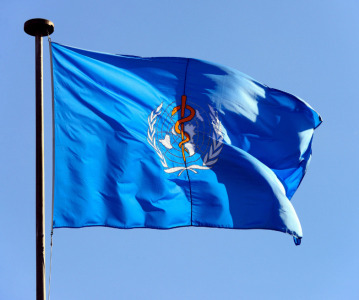FDA and EMA accept regulatory applications for Boehringer Ingelheim's Gilotrif for treatment of advanced SCC of the lung
Boehringer Ingelheim has announced that both FDA and EMA have accepted filing applications for afatinib for the treatment of patients with advanced squamous cell carcinoma (SCC) of the lung progressing after treatment with first-line chemotherapy. Afatinib has also been granted orphan drug designation by the FDA — a status given to a product intended for the treatment of a rare disease or condition.
Dr Jörg Barth, Corporate Senior Vice President, Therapy Area Head Oncology, Boehringer Ingelheim commented: "Working with the US and EU regulatory authorities marks the next stage in our journey to hopefully provide patients with a new, oral treatment for squamous cell carcinoma of the lung, a condition with an extremely poor prognosis. This is an encouraging prospect for Boehringer Ingelheim, as we remain fully dedicated to improving and extending the lives of patients with different types of lung cancer."
The submissions are based on data from the Phase III LUX-Lung 8 trial that compared Gilotrif(®) (afatinib) to Tarceva (erlotinib) in patients with advanced SCC of the lung progressing after treatment with first-line platinum-based chemotherapy. Data from the trial showed that treatment with afatinib resulted in superior progression-free survival (PFS, primary endpoint), reducing the risk of cancer progression by 19%, and superior overall survival (OS, key secondary endpoint), reducing the risk of death by 19% compared to erlotinib in this patient population.
In the LUX-Lung 8 trial, an improvement in quality of life and control of cancer symptoms was observed with afatinib versus erlotinib. More patients had improved overall health-related quality-of-life with afatinib than with erlotinib (36% vs. 28%). Significantly more patients had an improvement in cough with afatinib than with erlotinib (43% vs. 35%). Differences in the proportion of patients with improved dyspnea (51% vs. 44%) and pain (40% vs. 39%) were not significant for afatinib versus erlotinib. Afatinib significantly delayed time to deterioration of dyspnea compared with erlotinib. Time to deterioration of both pain and cough was similar for afatinib versus erlotinib.
The rate of severe adverse events was similar between the two treatment arms with differences observed in the incidence of certain side effects. A higher incidence of severe diarrhea and stomatitis (mouth sores) was observed with afatinib compared to erlotinib (grade 3 diarrhea: 10% vs. 2%; grade 3 stomatitis: 4% vs. 0%), while a higher incidence of severe rash/acne was reported with erlotinib compared to afatinib (grade 3 rash/acne: 10% vs. 6%).
Related News
-
News Pharmaceutical industry supports COP28 health stance in joint statement
As COP28 takes place over this week in Dubai, UAE, several bodies in the pharmaceutical and health industries have come together to announce support of key movements in sustainability in the sector, and to recognise sustainability as a health issue.&nb... -
News Biden backs Cold-War measures to shore-up medical supply chains
In a recent strategy to combat rising inflation and the cost of living crisis, President Joe Biden has invoked a Cold War-era act to increase investment in a selection of medicines and supplies. -
News CPHI Podcast Series: What does the changing US Pharma market mean for industry and patients alike?
In this week's episode of the CPHI Podcast Series Lucy Chard, Digital Editor for CPHI Online is joined by James Manser to discuss the political and market changes in the US pharma field. -
News Which 10 drugs are open to price negotiation with Medicare in the USA?
The Centres for Medicare & Medicaid Services, under the Biden administration in the USA, has released a list of the 10 drugs that will be open to price negotiations as part of the new legislation under the Inflation Reduction Act (IRA). -
News 10 Major Drug Approvals So Far in 2023
Last year, 37 novel drugs were approved by the FDA, this was a high number for such a category, and covered many fields including oncology, demonstrating how promising further research is, and how it is only continuing to build. To date, there are alre... -
News Novartis agrees for copies to be made of cancer drug to reach poorer countries
Novartis signs agreement with MPP to have generics of it's leukemia drug made so that it can be more easily distributed to the world's poorer countries. -
News CPHI Podcast Series: outsourcing and manufacturing trends
Listen to the CPHI Podcast Series this June to hear Gil Roth of the PBOA speak with Digital Editor Lucy Chard about the biggest trends and topics to watch in pharma outsourcing and manufacturing at the minute. -
News New WHO health emergency guidelines expect full transparency from Big Pharma
The WHO are proposing a new set of pandemic guidelines to set out how future global health crises should be handled.
Position your company at the heart of the global Pharma industry with a CPHI Online membership
-
Your products and solutions visible to thousands of visitors within the largest Pharma marketplace
-
Generate high-quality, engaged leads for your business, all year round
-
Promote your business as the industry’s thought-leader by hosting your reports, brochures and videos within your profile
-
Your company’s profile boosted at all participating CPHI events
-
An easy-to-use platform with a detailed dashboard showing your leads and performance







